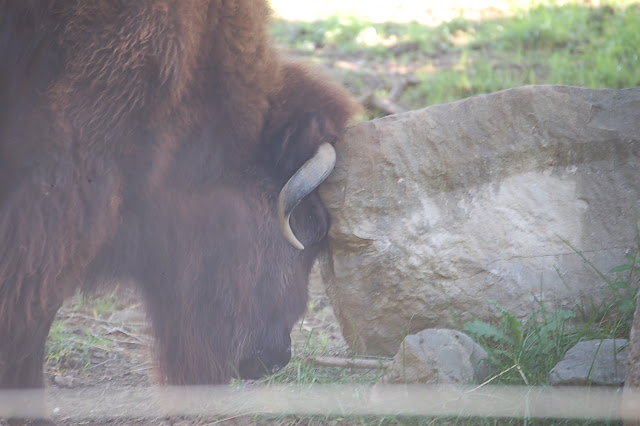I've read that it helps if the camera is close to the fence. Then the camera can more easily focus beyond the fence and on the animal. It's often not possible to get close to the fence, but sometimes the photo works out anyway.
Here, the fence is 3-4 feet away from the path I was standing on, and a strand of fence wire is visible as a light horizontal blur against the bison's dark nose and hair. The bison was 20 feet or more behind the fence.
 |
| A bison lounges 20 feet behind a wire fence (Columbus Zoo) |
 |
| Bison close to a wire fence (Columbus Zoo) |
 |
| Bison with a fence wire in the foreground (Columbus Zoo) |
Sunlight was shining brightly on a snow leopard's mesh, so I played artiste and tried to use it as a picture frame.
This one would be better with more of Shishir's head, and possibly his ear, in the diamond. It still wouldn't be a great picture because his head is turned slightly away.
 |
| Snow leopard through shiny mesh (Toledo Zoo) |
This one is better because the cat's mouth is open, but his eye is obscured. Not a particularly good shot.
 |
| Shishir, a male snow leopard (Toledo Zoo) |
Here's an example of disappearing mesh. I posted a full Bornean crested fireback a while ago; here's a close-up.
 |
| Bornean crested fireback (Toledo Zoo) |
The mesh was a couple feet away from me, and the fireback was a good six feet beyond it. The mesh must have had some effect on the fireback photo, but I don't see it.






